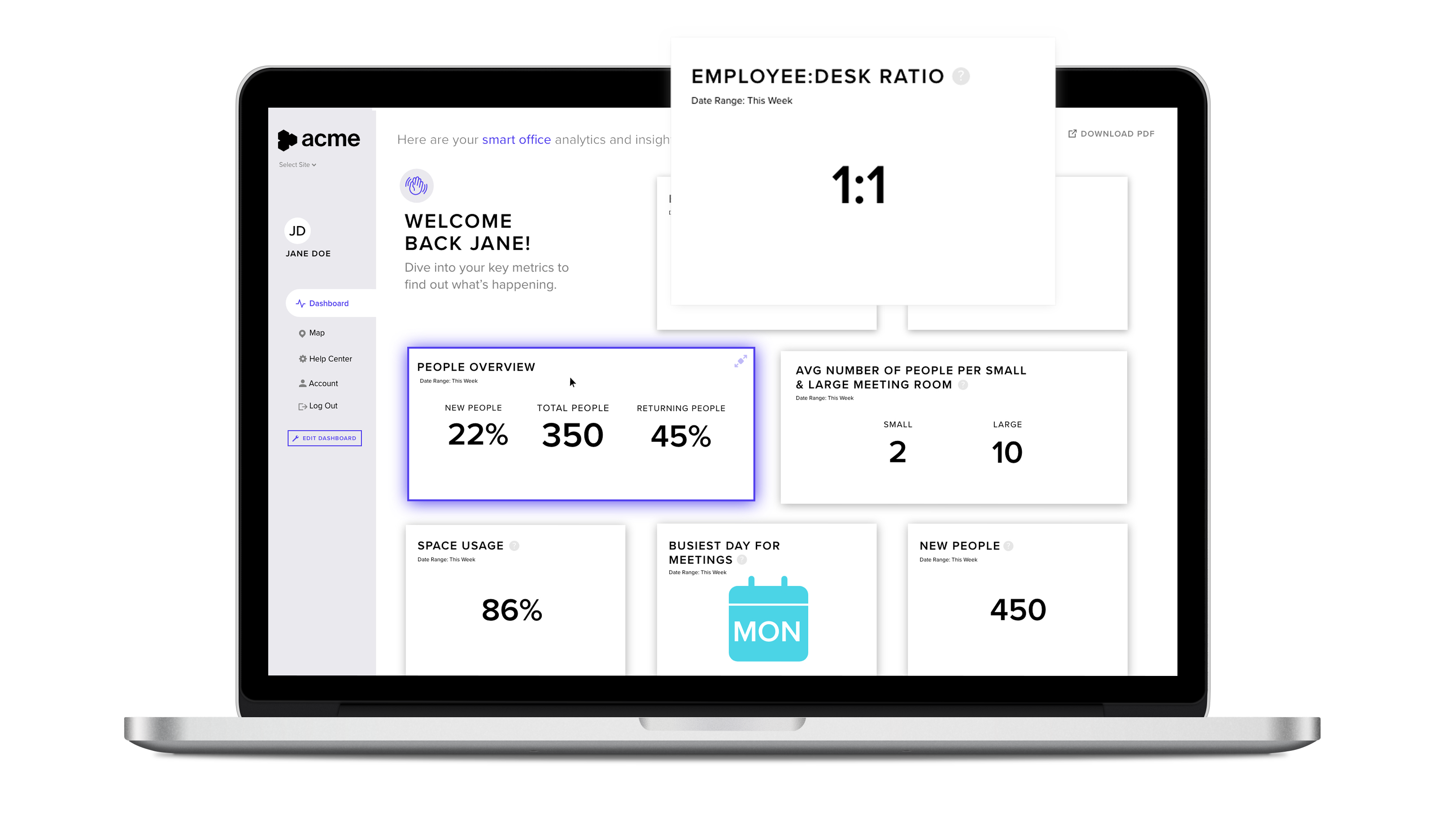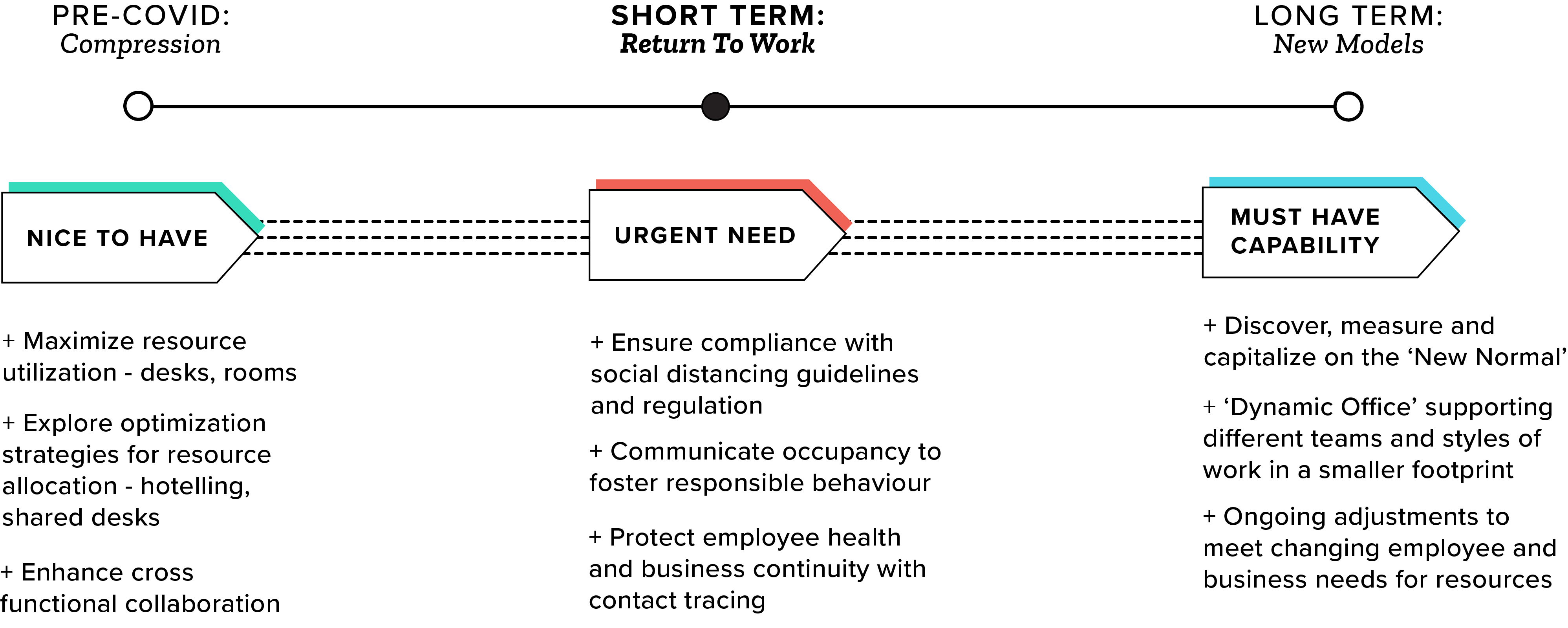The Dynamic Office Shift
The pandemic has changed how we've worked for the foreseeable future. Companies are determining how, when and why they'll return to their office space.
Pre-pandemic, businesses looked to optimize their foot print by driving down the square-footage per employee. Trends had moved from hundreds of square feet down to 125 or even 75 in some cases. Leading-edge companies looked to hoteling, flex work, and remote work scenarios. Virtual companies like Automatic emerged that were virtual from the start. And even then, as the data rolled in about the economic benefits, employees struggled with open floor plans and finding resources.
Pre-pandemic it was no surprise ‘when the firms switched to open offices, face-to-face interactions fell by 70 percent.’ The inclination to hunker down and find some privacy, even out in the open is something people strive for in order to be productive.
Workplace experience and facilities teams struggled to compress as many people into as few square-feet as possible, while ensuring their designs met the needs of a highly dynamic and changing workforce.
But if this was leading-edge companies, the rest hadn’t even entered this arena yet. The vast majority of companies still had assigned seating, even those that had moved from cubicles to open concept relied on assigned seating and many never broke the 1:1 to ratio. Real estate remained the highest operating cost next to salaries and few had figured out a way to rethink this part of their strategy to material benefit.

Fast forward to 2020 and we’ve just gone through the biggest work-from-home exercise. Outside of hospitals, grocers and essential services, businesses big and small were thrust into virtual operations. A narrative quickly built that companies would forever be virtual and most offices would be empty forever more. But as the panic subsided, and the months dragged on, we’ve come to realize the office has tremendous benefit to employees. It offers respite from the home, a destination for collaboration, and an area where focus can be achieved.
Make no mistake, despite the headlines of companies renouncing their office thrones, the office won’t disappeared for good. And with good reason. Jon Picoult’s Forbes article summarizes things nicely, “working from home won’t work for everyone. Organizations would be wise to recognize that before they rush into dismantling their physical offices.” From what we see, our clients are not aiming to keep people home permanently, but are instead re-thinking the purpose of the office.
In the near-term, the focus is to enable select employees that need to be in the office, to do so safely. This first effort is focused on supporting social distancing efforts and doing one’s part to avoid and/or be good citizens within the context of a pre-vaccine second/third wave. Facilities teams need ways to ensure compliance, set schedules, and automate policies around the ability for employees to book a space to work. This means communicating requirements and then measuring occupancy to ensure adherence. It means an ongoing adjustment to policy as every variable that changes along the way (different people, changing organization needs, and an ever-changing landscape) influences how the office will be needed.
And how we handle this stage is critical, because it will lead us toward a Dynamic Office.

The Dynamic Office will leverage concepts of remote working, flex work, and office designs we’ve seen before, but it’s primary differentiation will be its tech enablement. The Dynamic Office will require employers to rethink the purpose of the office to provide employees with an as-needed workplace for a variety of new workflows. Being able to use different spaces in a concierge-like fashion to support individuals and teams. The office will now support the employee in real-time, responding to their needs and adjusting over time.
We expect to see this as part of property managers/owners rethinking their lease structures and services as well. [For more on Space as a Service, check out CBRE’s David Cairns on the CBRE Forward podcast.]
The Dynamic Office will seek to adjust the office footprint to smaller spaces. For some companies that will mean having more office locations closer to where employees live. It will mean giving employees the opportunity to work from a variety of spaces, as needed, to suit their preferences, workflows, and balance with their personal life.
Data will be critical, not only to analyze the trends of who uses the office and its resources, but to use that data to build a digital-first experience for employees. In a Dynamic Office, the office is designed to serve their needs as individual contributors as well as teammates. We’ll see apps emerge to improve productivity, to advance security and access controls, Smart Building strategies will change to respond to the predictable scenarios. All while workplace experience and facilities teams become ever-increasingly digital and data forward.
It may be early days in this transformation of the physical office, but we’re already seeing companies setting plans to bring people back to the office and create a highly response work environment. This trend is only just beginning, but work has indeed been changed forever.
Accurate space utilization data through Wi-Fi?
We'll prove it to you.
See why industry leaders leverage InnerSpace to generate valuable insights that go beyond occupancy.

